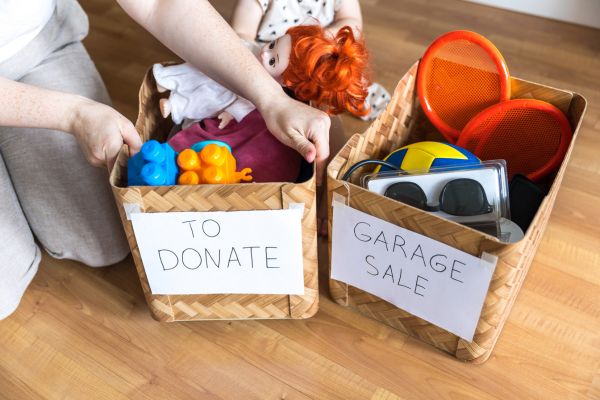Let’s be real—our homes can get chaotic fast. One day you’re just buying a few cute decor pieces, and the next, you’re drowning in stuff you don’t even remember owning. Sound familiar? That’s where minimalist decluttering strategies come in. It’s not just about tossing things into donation boxes; it’s about creating space for peace, clarity, and the kind of calm that feels like a deep breath every time you walk in the door.
Understanding the Heart of Minimalism
Before diving into the actual minimalist decluttering strategies, it’s worth asking—what’s minimalism, really? It’s not about empty white rooms or owning just one spoon (unless that’s your thing). It’s about being intentional. It’s choosing what adds value to your life and letting go of the rest. Minimalism helps you focus on what truly matters—your comfort, your time, and your peace of mind.
The thing is, clutter doesn’t just take up physical space. It eats up your mental bandwidth too. When your environment feels messy, your mind often mirrors that chaos. That’s why minimalism isn’t just aesthetic—it’s therapeutic.
Start Small, Start Smart
Here’s the truth: trying to declutter your whole house in one weekend? That’s a recipe for burnout. Start small instead. Pick one drawer, one shelf, or even just your desk. The goal is progress, not perfection. Once you tackle one small area, the momentum builds. That feeling of accomplishment fuels your motivation to move on to the next.
If you ever feel overwhelmed, remember—minimalist decluttering strategies aren’t about rushing. They’re about making thoughtful choices. Every item you keep or discard tells a story about your priorities.
Ask the Right Questions
When you’re deciding what stays and what goes, forget the guilt and focus on honesty. Ask yourself a few key questions:
Do I use this regularly? Does it bring me joy or serve a purpose? Would I buy it again today if I didn’t already have it?
Those simple questions cut through emotional attachment and force clarity. Sometimes we hang on to things out of habit or sentiment, but minimalism invites you to redefine your relationship with “stuff.” It’s okay to let go—even if that thing was expensive or gifted. What matters is whether it serves you now.
The “One In, One Out” Philosophy
This is one of the most practical minimalist decluttering strategies out there. Every time something new enters your home, something old must leave. It’s like setting a balance rule for your space. You buy a new pair of shoes? Great—donate or sell one you never wear. This method keeps your home from slipping back into cluttered chaos and makes you more mindful when shopping.
Over time, you’ll find that you start buying less impulsively because you don’t want to give something up just to make room. That’s how minimalism quietly rewires your habits—it’s not about deprivation; it’s about intention.
Create Functional Spaces, Not Just Pretty Ones
Let’s talk about design for a second. Minimalist spaces often look beautiful, but they’re not meant to be museum-perfect. The key is functionality. Your home should support your daily life—not make you tiptoe around for fear of messing up the vibe.
Think open counters, easy-to-reach storage, and furniture that actually fits your needs. Everything should have a home. When you know where things go, cleaning becomes effortless. You won’t spend hours hunting for lost chargers or your favorite mug.
And here’s something most people miss: minimalism doesn’t mean stripping away personality. Keep pieces that reflect who you are—travel souvenirs, family photos, a quirky lamp you love. Just make sure they stand out instead of getting lost in a pile of randomness.
Digital Decluttering Counts Too
We often forget that clutter isn’t just physical—it’s digital too. Your phone, laptop, and inbox can be just as overwhelming. Minimalist decluttering strategies extend to your digital world as well. Unsubscribe from emails you never read. Delete unused apps. Organize your files into clean folders.
You know that sigh of relief when your desktop is finally clear? That’s mental clarity in digital form. The less noise on your screens, the more focus you’ll have in real life. Try setting aside 15 minutes a week just for digital cleanup—it’s a game changer.
Learn to Love Empty Spaces
Here’s something people rarely talk about: empty space isn’t wasted space. It’s breathing room. When you declutter, resist the urge to immediately fill every gap. Let those blank spots sit for a while. Notice how your room feels lighter, calmer, maybe even bigger.
Minimalism teaches you to appreciate space for what it is—a chance to pause, reflect, and simply be. It’s amazing how much creative energy flows when your surroundings stop screaming for attention.
Make Decluttering a Lifestyle, Not a One-Time Event
Minimalist decluttering strategies work best when they’re part of your lifestyle, not just a weekend project. Schedule mini-declutter sessions every month. Review your wardrobe at the start of each season. Do a quick scan of your kitchen before grocery shopping. It doesn’t have to be intense—just consistent.
When you treat decluttering as maintenance instead of a monumental task, it becomes effortless. You’ll spend less time organizing and more time actually living. That’s the real win.
Mindset Over Materials
Let’s be honest—stuff isn’t the enemy. The problem is our attachment to it. Minimalism isn’t about punishing yourself or living in scarcity; it’s about freedom. When you stop equating possessions with happiness, you start finding joy in experiences, people, and moments instead.
Maybe it’s reading a book on a freshly cleared couch, or making coffee in a clutter-free kitchen. Those simple joys hit differently when your space feels open and calm. You realize you didn’t need more—you just needed less of what didn’t matter.
Final Thoughts: Living With Less, Gaining So Much More
At the end of the day, minimalist decluttering strategies aren’t about perfection—they’re about peace. It’s not a one-size-fits-all system. It’s about crafting a lifestyle that feels light, intentional, and deeply personal. Start small, be kind to yourself, and keep going. The goal isn’t to have the fewest things—it’s to make room for the best things.
Because when your home reflects clarity, your life follows suit. And let’s be real—there’s nothing more freeing than walking into a space that feels like you, minus the mess.



